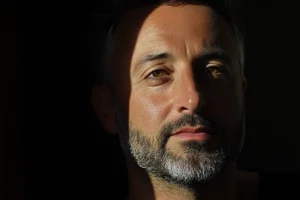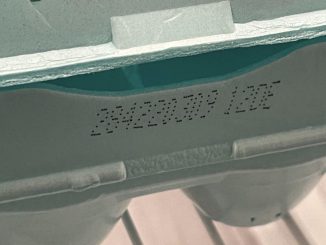
The Meaning Behind the ‘WC’ Sign: A Journey Through Bathroom Terminology
Have you ever noticed the letters WC outside a public restroom and wondered what they stand for? You’re not alone—people across the globe often puzzle over this cryptic abbreviation.
The Mystery of WC
Simply put, WC stands for water closet, a term historically used to describe a small room containing a toilet and sometimes a sink. While this might clarify the letters, it doesn’t exactly make the term feel more logical—similar to how “restroom,” “bathroom,” or “loo” can seem perplexing in their own right.
In 2020, a TikTok video featuring a couple named Shelby and Dylan hilariously highlighted the differences in bathroom terminology between Americans and Canadians. Walking past a sign reading washroom, Dylan quipped:
“What in the world is a washroom? And what are they washing in there? Oh, it’s a restroom. The only thing I wash in there is my hands.”
Shelby, off-camera, cheekily countered, “Do you rest in a restroom?”—to which Dylan admitted: “Good point. They both don’t make much sense.”
The video sparked a lively online debate about what to call the sacred space. Some commenters preferred “bathroom,” while others leaned toward “toilet,” “washroom,” or “restroom.”
One person humorously recounted a Disneyland visit where asking for the washroom led them to the laundromat. Another chimed in with, “Wait until he finds out about water closets.”
What Is a Water Closet?
According to Merriam-Webster, a water closet refers to “a compartment or room with a toilet” or “a toilet bowl and its accessories.”
Historically, the term reflects a time when specific rooms served distinct purposes. Bathrooms were for bathing, restrooms for resting or grooming, and the water closet for, well, using the toilet. As indoor plumbing became more common in the late 19th century, these spaces gradually merged into the modern bathroom we know today.
The water closet, however, often remained a separate, enclosed room in some homes and public spaces, particularly in Europe and international facilities. You’ll frequently spot the abbreviation WC in airports, hotels, or restaurants, catering to a globally diverse audience.
WC Across Cultures
Online forums like Reddit often dive into the quirks of global bathroom terminology. One post posed the question, Why is a public WC called a bathroom if there’s no bath?
A user responded:
“Americans might ask, ‘Why is it called a WC if it isn’t even a closet?’”
Others shared cultural takes:
- In Russian, it’s referred to as a room without windows, even if there’s a window.
- In Esperanto, it’s necesejo, meaning “necessary place.”
- Canadians frequently use washroom, which is also popular in parts of the U.S. Midwest.
Restroom vs. Bathroom vs. Washroom
The terminology debate continues, with many feeling washroom is the most logical since washing happens there. Meanwhile, terms like restroom or bathroom remain euphemisms.
One Redditor summed it up best:
“Best one, I think. You should be washing in there—not resting.”
What Do You Call It?
Whether you say WC, restroom, bathroom, toilet, or washroom, everyone has a favorite term. What’s yours? Share your thoughts, and don’t forget to spread this story to find out what others think!
Steve Harvey Under Fire Following His Wife’s Use of the “R” Word

Certain words carry significant impact and should be avoided altogether. Some of these words target specific groups, while others are simply too offensive to tolerate. When Steve Harvey’s wife used the word “retarded” on social media, it caused public outcry. Steve Harvey stepped in to address the situation and defend his wife.
The incident unfolded in a video on Marjorie Harvey’s Instagram, where she and Steve were playfully cutting fruit in the kitchen. Marjorie used the offensive term while joking about an argument with her husband over vegetable cutting. However, her choice of words sparked a major controversy, prompting Steve Harvey to intervene.
In the video, Marjorie can be heard saying, “I’m sitting here arguing with my husband, ’cause clearly he thinks I’m retarded [and] I don’t know how to cut a beet.” This clip garnered over 400,000 views on Instagram, where Marjorie boasts 1.7 million followers as a fashion and lifestyle blogger.

Many of Marjorie’s followers expressed disappointment and outrage at her use of the derogatory term. Some highlighted the harmful impact such language has on individuals with cognitive disabilities and their families. Despite backlash, some supporters dismissed the criticism as excessive political correctness.
Steve Harvey defended his wife’s use of the word, arguing it was not meant to offend and that people were overreacting. He expressed frustration with what he perceived as an overly sensitive response from the public.

The incident raised questions about the public’s reaction to offensive language and the boundaries of political correctness. While some felt the outrage was justified, others believed it was blown out of proportion. Ultimately, the controversy emphasized the importance of sensitivity and respect when using language, particularly in a public setting.



Leave a Reply